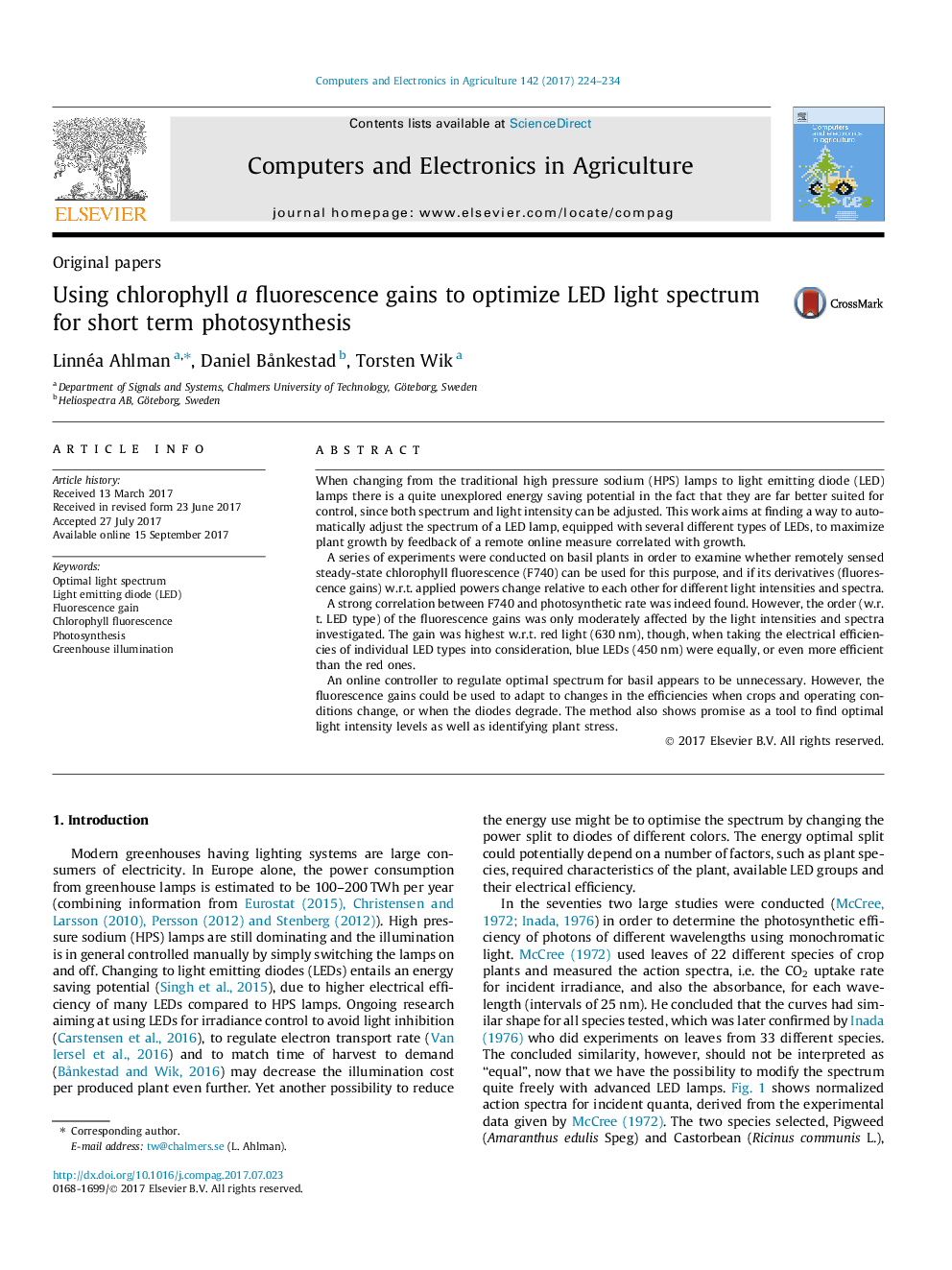| کد مقاله | کد نشریه | سال انتشار | مقاله انگلیسی | نسخه تمام متن |
|---|---|---|---|---|
| 6458679 | 1361745 | 2017 | 11 صفحه PDF | دانلود رایگان |

- A method to energy optimize LED lamp spectra for plant growth by biological feedback.
- The method maximizes the gains from the power to each LED type to a growth measure.
- Remotely sensed steady state fluorescence gains can serve as feedback signal.
- The fluorescence gains order is rather insensitive to background light spectrum.
- A tool for spectrum calibration (optimal power split on different diodes).
When changing from the traditional high pressure sodium (HPS) lamps to light emitting diode (LED) lamps there is a quite unexplored energy saving potential in the fact that they are far better suited for control, since both spectrum and light intensity can be adjusted. This work aims at finding a way to automatically adjust the spectrum of a LED lamp, equipped with several different types of LEDs, to maximize plant growth by feedback of a remote online measure correlated with growth.A series of experiments were conducted on basil plants in order to examine whether remotely sensed steady-state chlorophyll fluorescence (F740) can be used for this purpose, and if its derivatives (fluorescence gains) w.r.t. applied powers change relative to each other for different light intensities and spectra.A strong correlation between F740 and photosynthetic rate was indeed found. However, the order (w.r.t. LED type) of the fluorescence gains was only moderately affected by the light intensities and spectra investigated. The gain was highest w.r.t. red light (630Â nm), though, when taking the electrical efficiencies of individual LED types into consideration, blue LEDs (450Â nm) were equally, or even more efficient than the red ones.An online controller to regulate optimal spectrum for basil appears to be unnecessary. However, the fluorescence gains could be used to adapt to changes in the efficiencies when crops and operating conditions change, or when the diodes degrade. The method also shows promise as a tool to find optimal light intensity levels as well as identifying plant stress.
Journal: Computers and Electronics in Agriculture - Volume 142, Part A, November 2017, Pages 224-234